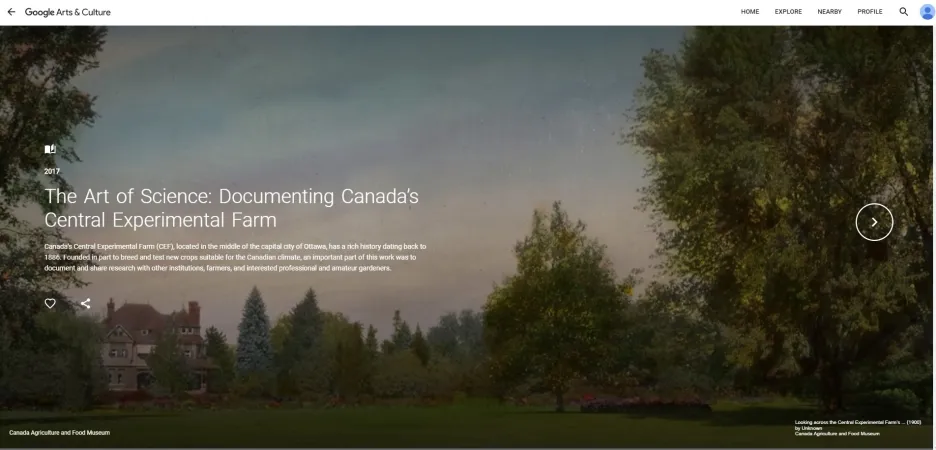Ingenium reaches international audiences through Google Arts & Culture app

Google Arts & Culture recently made headlines with its selfie-to-painting recognition app, as people eagerly tried out a new facial recognition feature to see if they resemble the Mona Lisa or van Gogh.
What many people don’t know is that Google Arts & Culture has been around since 2011 – and is partnered with museums and galleries across the globe. Ingenium has been a partner in this world-wide initiative since 2015.
So, why would a science and technology-focused organization be featured in an arts project? Because, quite simply, science is beautiful! Google Arts & Culture gives access to impressive and visually-stunning collections from our three national museums—the Canada Agriculture and Food Museum, the Canada Aviation and Space Museum, and the Canada Science and Technology Museum.
Though not as well-known as the museums’ locomotives, tractors, or airplanes, the Ingenium Library and Archives holds a large “2D” collection made up of hundreds of thousands of photographs, brochures, trade literature pieces, manuals, plans, drawings, and more. In the past several years, we have made great strides in getting this collection out to the world, through a new visual search engine (stay tuned to the Channel for more on that!) in each of the three museums, and through our partnership with Google Art & Culture.
Currently, Ingenium has over 400 new photographs, paintings, and glass slides on the Google Arts & Culture app, as well as three eye-catching virtual exhibits.
Check out a sampling of what Ingenium has to offer via Google Arts & Culture!

This hand-coloured glass slide shows a group standing in front of the tulip gardens at the Farm. Visitors still come to see the Ornamental Gardens and greenhouses filled with lilies, lilacs, tulips, and other blooms.
The Art of Science: Documenting Canada’s Central Experimental Farm
Canada’s Central Experimental Farm has a rich history dating back to 1886. Founded in part to breed and test new crops suitable for the Canadian climate, an important part of this work was to document and share research with other institutions, farmers, and interested professional and amateur gardeners. This documentation was not just functional, but beautiful.

Prior to the arrival of the Safety Bicycle, it was considered outrageous for a woman to appear in public in bloomers.
Cycling: The Evolution of an Experience, 1818-1900
Millions of people ride bicycles every day. Our experience is almost exactly the same whoever and wherever we are, but that experience took almost a century of innovation to emerge. In this exhibit, we used the collections of the Canada Science and Technology Museum to trace the evolution of the cycling experience between 1818 and 1900.

The first Avro CF-105 Arrow, registration number RL201, taking off. This aircraft was unveiled on October 4, 1957, and first flew on March 25, 1958.
Canada’s Jet-Age Dream: The Avro Arrow
Between 1952 and 1959, Avro Canada developed an advanced all-weather fighter interceptor called the CF-105 Arrow. This aircraft, with its futuristic, delta-wing design, captured Canadians’ imaginations in a way few projects have, before or since. The Canada Aviation and Space Museum holds a large collection of Avro-related material, much of it presented here in digital form for the first time.






















